Minds On
What does it take to be an athlete?

Brainstorm
Brainstorm
Have you ever wondered what it takes to be an athlete in the Olympics?
How do athletes use their muscles for their particular sport? Which sports required endurance?
What do you think makes the Olympics so exciting for people all over the world to engage in?
Action
Body systems

In order for a body to move, coordination of the muscles, ligaments, tendons, cartilage, bones and joints must occur. Together, these elements coordinate with one another as part of the musculoskeletal system.
Sports that involve repetitive movements like running, swimming, rowing use the brain to fine tune that specific movement to become as perfect as possible, and to become automatic.
Sports that involve thinking and reaction to the environment like basketball, tennis, or downhill skiing require the body to respond quickly to change movements.
In many Olympic events, especially those involving racing, training of the cardiovascular system is important. A strong cardiovascular system will deliver fresh blood to the muscles as well as take away waste products from the difficult exercise.
Musculoskeletal system
The musculoskeletal system combines two systems in the human body. The muscular system and the skeletal system. Together, these systems give the body movement, shape, support, and stability.
But how does a body move in such complex ways? Let’s explore the musculoskeletal system to learn about the parts and what they do.
The musculoskeletal system combines two systems in the human body. The muscular system and the skeletal system. Together, these systems give the body movement, shape, support, and stability.
Check your learning!
Check your learning by answering the following questions.
Select the correct answer, then press ‘Check Answer’ to see how you did.
Featured athletes
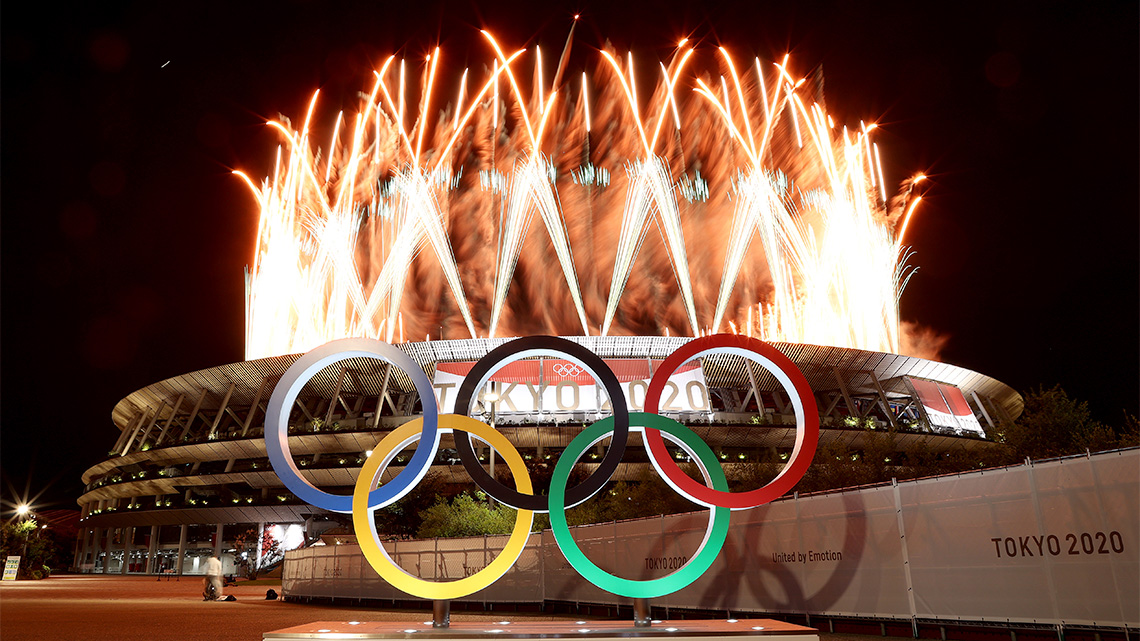
In the 2020 Tokyo Olympic Games, the Canadian Olympic Committee sent 370 athletes (145 men and 225 women) to compete in 30 sports, one of the largest team the country has sent to the games. Team Canada ranked 11th in the world winning 7 Gold, 6 Silver and 11 Bronze medals. The 24 medals won at the 2020 Summer Olympics mark one of the country’s best-ever total medals result.
In the 2020 Paralympic Games, also in Tokyo, Canada sent 128 athletes to the games. Canada finished 19th in the overall standings with 21 athletes winning medals: 5 gold, 10 silver, and 6 bronze medals.
Research
Explore the bios of some of the amazing athletes that competed at these games and note how their sport connects to the musculoskeletal and/or cardiovascular systems. If you wish, you can also research an Olympic athlete of your choice.
Use the following organizer to record your ideas about how these various sports and athletes use their bodies to compete.
Before you begin your research, explore this video that explains the Scientific Research Process.
Complete the Olympic Athlete Chart in your notebook or using the following fillable and printable document. If you would like, you can use speech-to-text or audio recording tools to record your thoughts.
|
Athlete |
Sport |
How does this sport connect to the musculoskeletal and/or cardiovascular systems? (e.g., strong core muscles for balance, strong leg muscles for powering speed, strong cardiovascular system for endurance and speed) |
|---|---|---|
|
Ellie Black |
||
|
Anna Guglia |
||
|
Damian Warner |
||
|
Aurélie Rivard |
||
|
Quinn |
Press the ‘Activity’ button to access Olympic Athlete Chart.
Ellie Black
Press the following tabs to learn about Ellie Black.

Ellie Black took the Canadian team to 5th place at the Rio 2016 Olympic Games, is the first Canadian to win an All-Around medal at the World Championships, and narrowly missed another medal at the 2019 World Championships. Having to pull out of the all-around final event at the Tokyo 2020 Olympic Games, after reaggravating an ankle injury, Black found the courage within to compete in the beam final, finish 4th and become Canada’s most successful female artistic gymnast ever.
Gymnasts are strong, flexible, agile, and have superior balance and control of their musculoskeletal systems. Elite artistic training includes stretching andconditioning to avoid injury to the joints, tendons and ligaments strength training to build muscle, endurance training and practice on each event. Gymnasts may also study dance as part of their training.
Examine how this gymnast uses her muscles to rotate her body above the balance beam, and controls her landing to keep her balance. Complete your chart about various sports and the requirements of a person’s body systems.
Annie Guglia
Press the following tabs to learn about Annie Guglia.
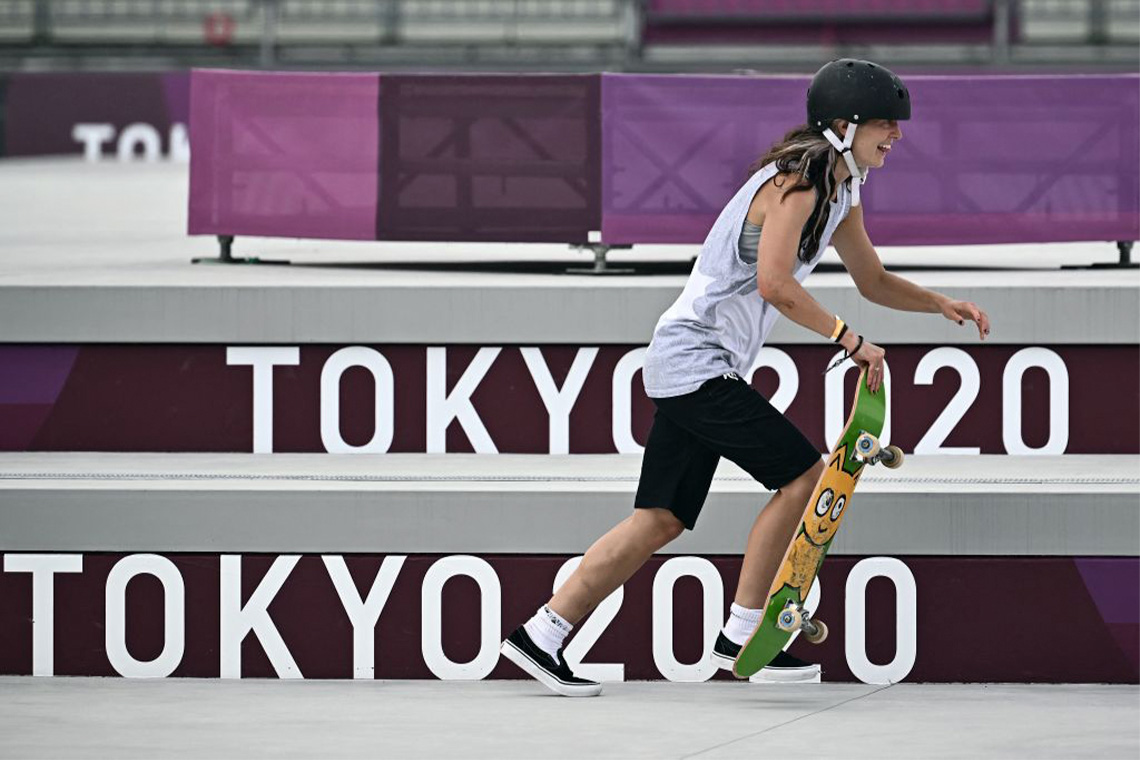
Annie Gugulia is a professional skateboarder and advocate for women in skateboarding. She founded Skirtboarders, an all-female skateboarding collective designed to inspire young women to pick up the sport and have fun. Although Guglia missed out on qualifying for the Tokyo 2020 Olympic Games, she was added to Team Canada’s roster a day before the women’s street event as an injury replacement. “Dreams do come true,” Guglia wrote on social media, grinning from ear to ear.
Skateboarders need to be agile, and flexible. In order to complete many maneuvers, they use their core strength and balance. This is the use of one’s abdominal and back muscles to maintain the ability to keep their body upright and steady. It is the foundation to most movement skills. Balance is an important part of many sports and physical activities such as skateboarding, gymnastics, figure skating, or sport climbing. Balance will also allow a person to move safely in their environment whether it be on ice and snow, running up stairs, or balancing on rocks to cross a river to not sprain ligaments or strain muscles.
Examine this video of skateboarders practicing their balance. Complete your chart about various sports and the requirements of a person’s body systems.
Damien Warner
Press the following tabs to learn about Damien Warner.
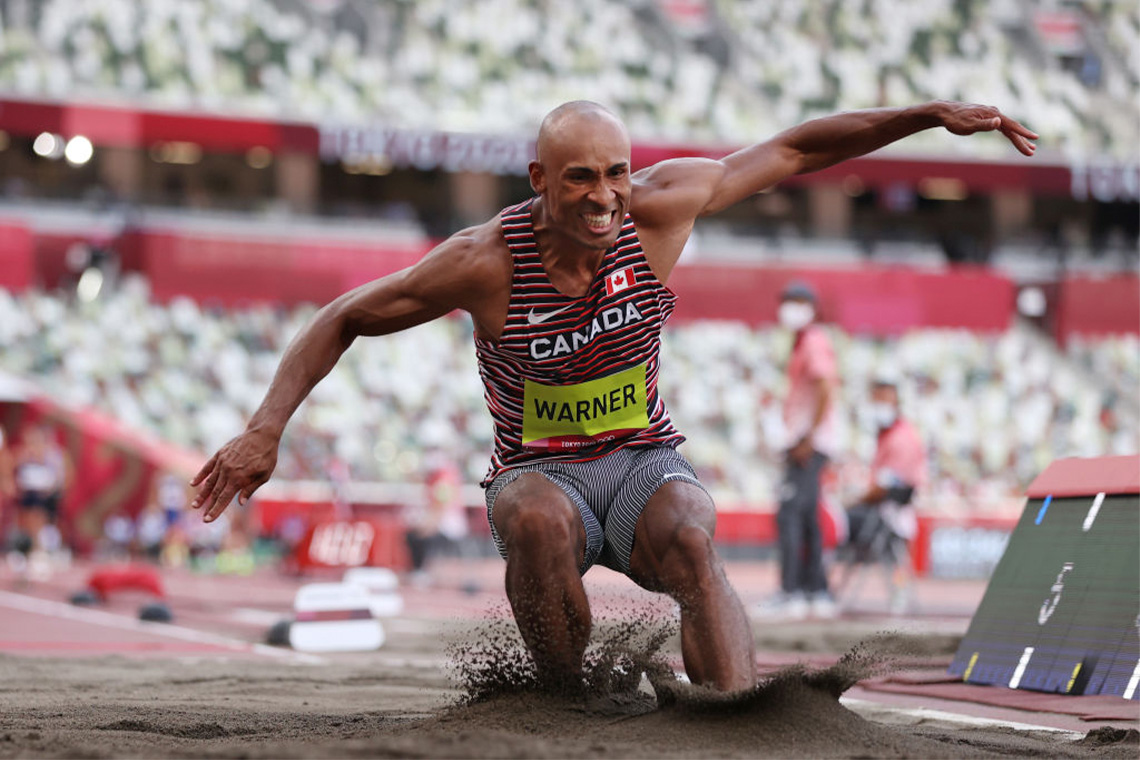
The decathlon is a two-day competition where the athletes compete in ten running, jumping and throwing events. Damian Warner’s trophy room is filled with gold medals from the Pan Am and Commonwealth Games, a bronze medal from the Rio 2016 Olympics, and silver and bronze from the World Championships, he keeps striving for Olympic gold. The Tokyo 2020 Olympic Games allowed Warner to fulfil his dream, winning the gold medal and becoming an Olympic Champion.
One the first day, decathletes will compete in a 100-meter race, throwing the shot put, high jump, long jump, and a 400-meter race. The second day’s events include the 110-meter hurdles, pole vault, discus throw, and a 1500-meter race.
The events run all day with some time to rest and recover both the muscles involved and the athlete’s cardiovascular system.
Jumping is a skill used across many sports and physical activities. The two main types of jumps are vertical – jumping for height, and horizontal – jumping for distance. Decathletes need to be good at both types of jumping. Jumping involves the use of the leg and core muscles, and bend your knees and hips, swing your arms back and forward as you push off with the balls of your feet.
Examine the following videos of hurdlers, pole vaulters, shot putters, high jumpers, and long jumpers as some of the examples from the Decathalon events. Complete your chart about various sports and the requirements of a person’s body systems.
Hurdles
Hurdles is when a runner races over a series of obstacles which are called hurdles. These are set a specific distance apart from each other.
Pole vault
Pole vault is when an athlete uses a flexible, long pole to help them jump over a bar that is up high.
Shot put
Shot Put is an event that has athletes “putting” a heavy ball as far as they can.
High jump
High jump is when athletes must jump over a bar that is set at specific heights without any equipment to help them.
Long jump
Long jump is when athletes jump as far as they can into a sand pit from a jump off spot.
Aurélie Rivard
Press the following tabs to learn about Aurélie Rivard.
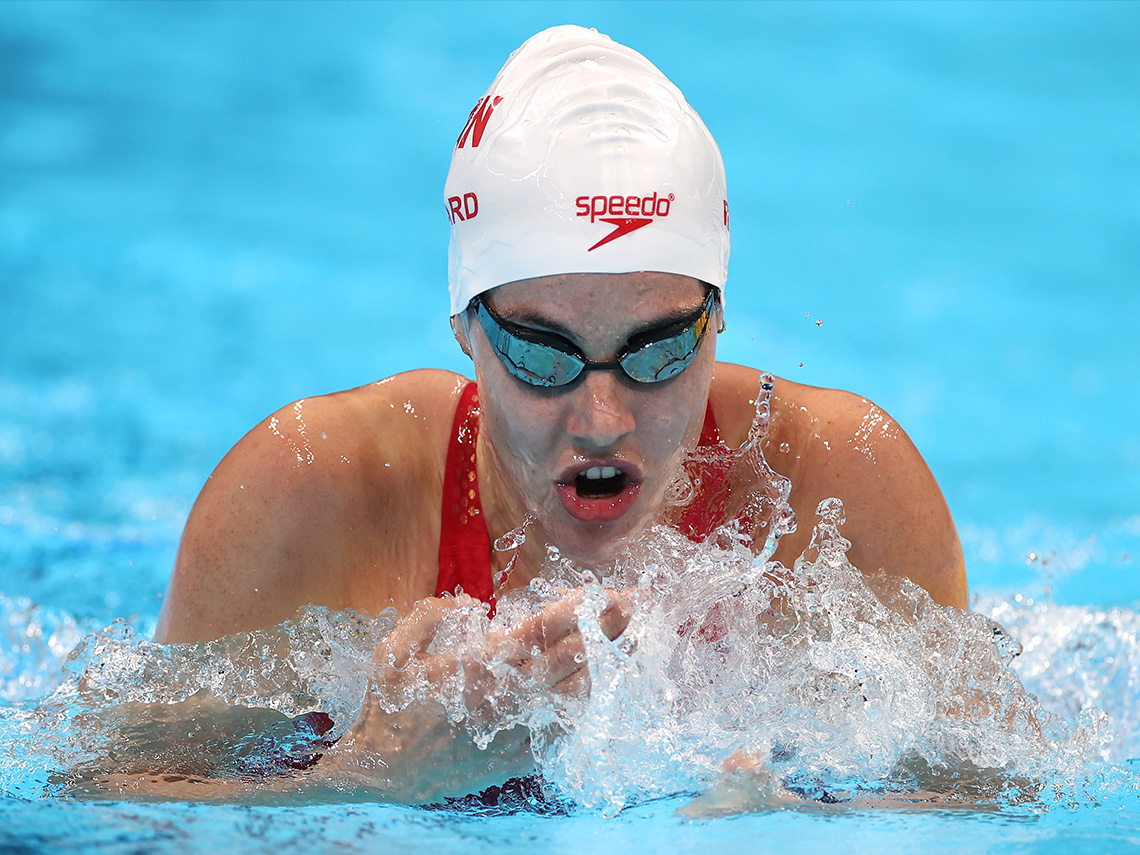
Aurélie Rivard finished the 2020 Tokyo Paralympic games with 5 medals, including 2 gold medals, giving her 10 overall Olympic medals. She was the flag bearer at the closing ceremonies of the Olympics. Rivard has set world records in many different swimming events and was named Canada’s Female Para-swimmer of the year 4 times: 2014, 2015, 2016, and 2019.
Swimming is a cardiovascular sport that is more gentle on the body than running because the water prevents the hard impact of joints and bones on the surface. Swimming uses many muscle groups in the body. It strengthens flexibility in the body’s neck, shoulders, hips, arms and legs. It also requires coordination and endurance.
Which joints are helping to move the swimmer? Do you think swimmers require more cardiovascular training than skateboarders? Examine the following video of swimmers. Complete your chart about various sports and the requirements of a person’s body systems.
Quinn
Press the following tabs to learn about Quinn.
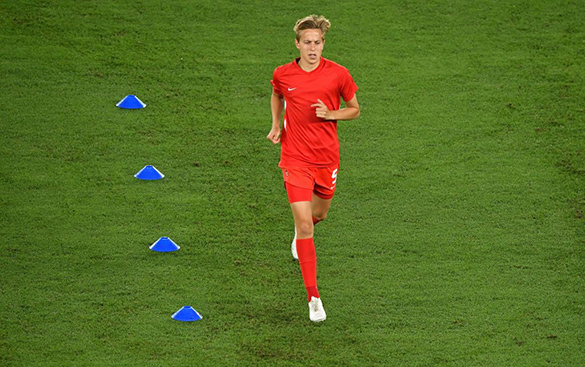
In 2020, Quinn was a player on the 2020 gold winning, Canadian soccer team. They represented Canada on three Canadian national teams as well. Quinn is a midfielder who went to Duke University in the United States where they won Midfielder of the Year award. Quinn is the first openly transgender and non-binary athlete to win an Olympic Gold medal. They have been a role model for helping to support other transgender and non-binary athletes on their journey.
Soccer requires agility and quick reaction to the game’s events. Strong muscles allow a player to kick hard and run fast, and conditioning that includes stretching and strengthening helps a play to minimize injury to their joints and ligaments when they are changing direction at quick speeds and with great force.
Soccer games involve bursts of speed, but also endurance run for a whole game. Cardiovascular endurance is important to be able to play through a soccer game.
Examine how a player quickly changes direction to move the ball around other players.
Consolidation
Use your research to think critically

From the chart you completed about the various sports, in your opinion, which do you think would be the most challenging to train for? Explain your thinking in a format of your choice.
When planning your answer, consider the musculoskeletal and cardiovascular requirements and use these terms when explaining your choice.
Pause and Reflect
Reflection questions
The sports that were explored in this learning activity need musculoskeletal and cardiovascular strength and endurance.
Consider the following questions. Record your responses in a method of your choice.
- Why is it important for people who perform these sports to understand the systems in the body that are being used during these sports? How can it help them? What is one sport or one athlete that you explored that surprised you in some way?
- What is one sport or athlete that you explored that you would like to learn more about? Why?
Reflection
As you read through these descriptions, which sentence best describes how you are feeling about your understanding of this learning activity? Press the button that is beside this sentence.
I feel…
Now, record your ideas using a voice recorder, speech-to-text, or writing tool.